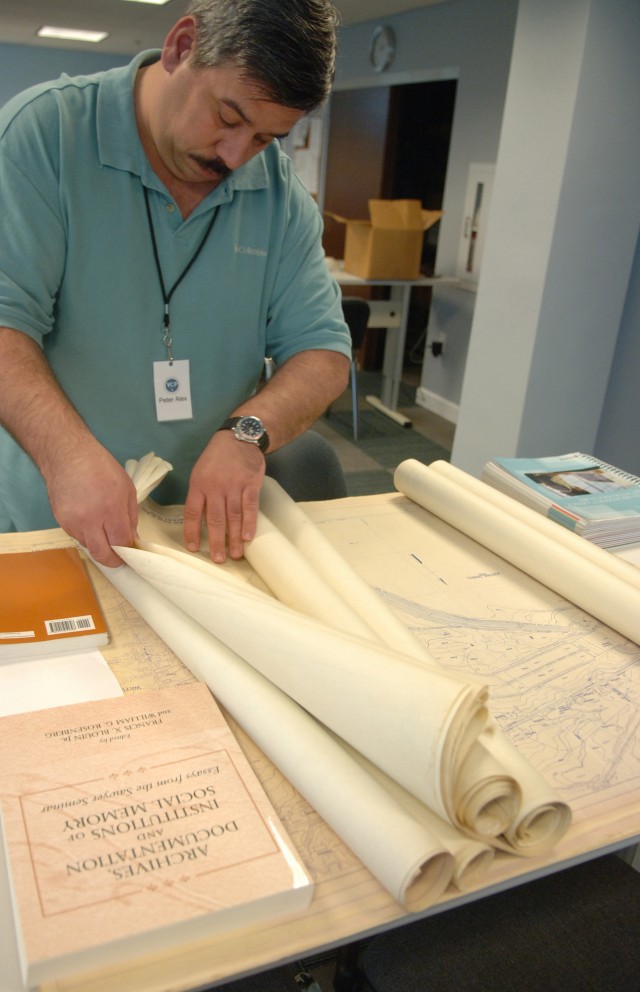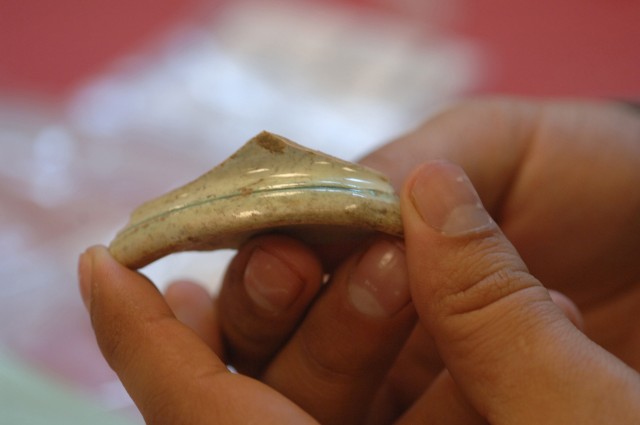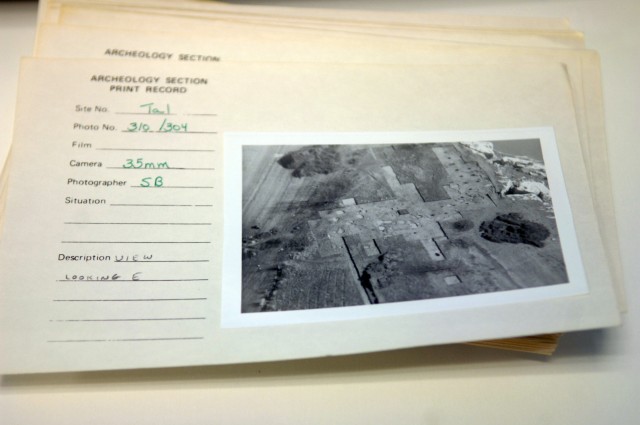Lakes, dams, mills, mines, mounds, ancient havens and maybe a haunted house or two are all some of the locations veterans get to visit vicariously on a daily basis working on the U.S. Army Corps of Engineers Veterans Curation Project.
Housed in the basement of the Historical Society of Washington, D.C., the project's purpose is to train veterans of Iraq, Afghanistan and other conflicts in archaeological processes. While preserving the past with stewardship of federally-owned irreplaceable archaeological collections returnees gain skills in records management, archival procedures, communication, computer database and administrative fields.
As the VCP workers catalog, document, label, and organize unearthed artifacts, manage maps, and convert collections of photographs to digital databases they find clues to past cultures. "It's very interesting, we learn about different tools from indigenous cultures, and possible uses for them. Each artifact holds a small history lesson yielding information and clues," said Hector Rodriguez, an active reservist with the 303rd Psychological Operations Company.
For Matias Figueroa, a member of the National Guard's 372nd Military Police Battalion, it's a way to learn about ancient practices." I'm curious about cultures and how they survived. We catalogued a nine-inch stone with small nicks in it. We found out it was part of a skills game to throw spears at the stone," said Figueroa.
All the veterans who are part of the program were glad to be helping preserve the past for future generations to ponder.
The VCP program started in 2009 with sites in Augusta, Ga., and St. Louis, Mo. The Washington, D.C., site opened in January, with funding from the American Recovery and Reinvestment Act.








Social Sharing